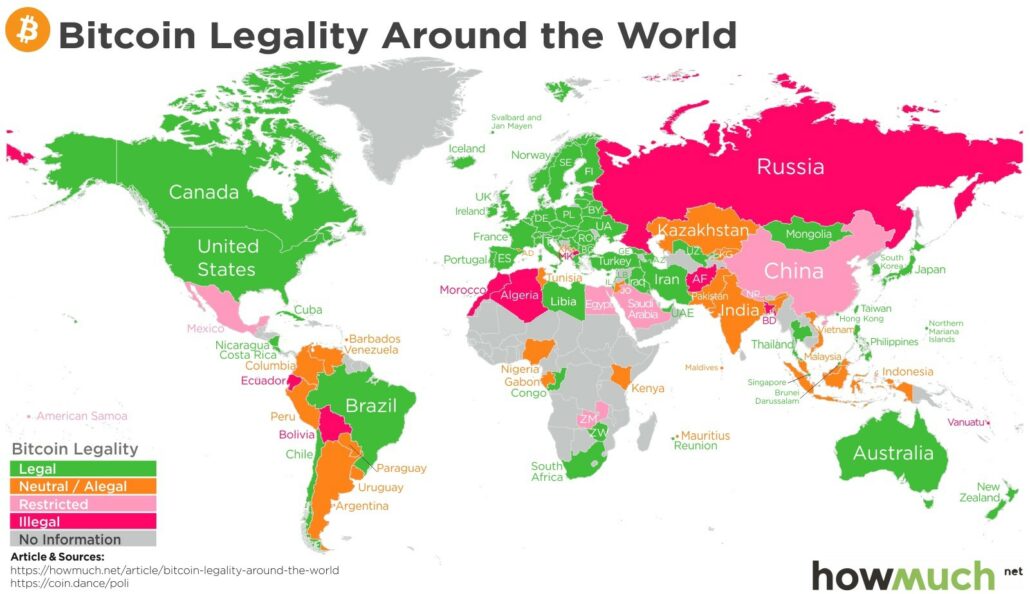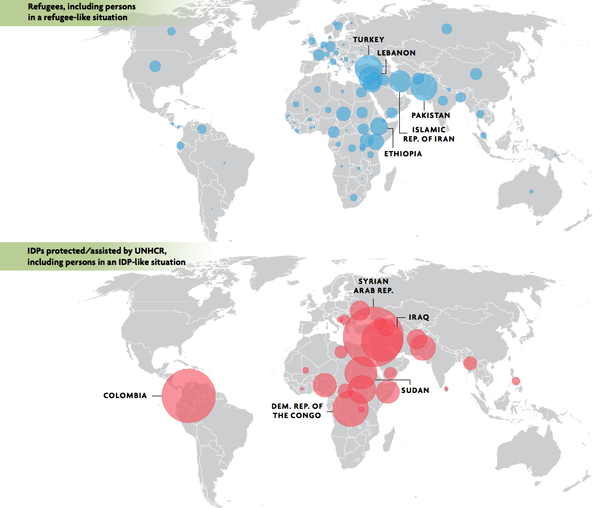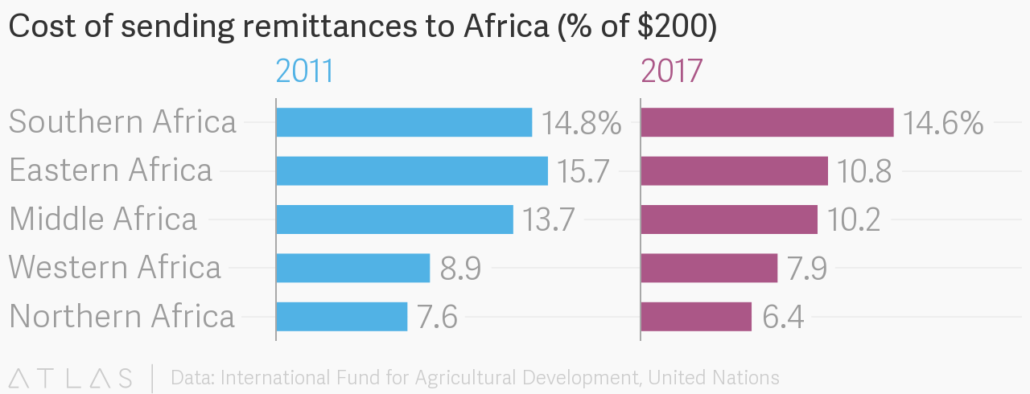By: Geeq on Jun 19, 2019
This article is an excerpt of work commissioned by the Chief Economist’s Office of Equitable Growth, Finance, and Institutions Practice as part of the World Bank Productivity Project. All opinions expressed in this article are our own and do not represent the official stance of The World Bank.
The stated mission of the World Bank is to end extreme poverty by reducing the share of the global population that lives in extreme poverty to 3 percent by 2030 and to promote shared prosperity by increasing the incomes of the poorest 40 percent of people in every country. A key driver for this is increasing financial and social inclusion, especially of poor and marginalized populations.
One of the primary application spaces for blockchain is Fintech. Bitcoin was launched in 2009 as an experimental payment mechanism that was self-supporting and completely independent of any government or institution. Ethereum was launched in 2013 and built on this idea by adding smart contracts that allowed agents to make binding commitments without a Trusted Data Intermediary (TDI). The third largest cryptocurrency powers the Ripple network which is an interbank settlement system meant to compete with SWIFT. Most of the other top twenty blockchain platforms support “alt-coins” which compete with Bitcoin and Ethereum. Many other startups exist to provide brokerage, payments, international transfers, custody solutions for securities, derivatives of various kinds, loans, and a wide array of other financial services. There are even a number of blockchain startups whose purpose is to help other blockchain startups get funding.

In this section, we focus on two applications that connect directly to the mission of the World Bank: financial inclusion and resilient financial systems.
The Problem of the Unbanked
It is estimated that about 35% of the world’s population did not have bank accounts of any kind as of 2017. Citizens of low income countries, the poor in general, and women in particular, are disproportionately affected.1 Refugees and the displaced can lose contact with their banks or have accounts locked or confiscated. In most countries, banks are not allowed to open accounts without doing KYC and AML checks, which automatically excludes the billion or more people who have no official identification.

Being unbanked leads to financial exclusion and makes it difficult for people to save money, get credit, start their own business, invest in education or health, manage risk, receive remittances or money transfers, keep their wealth safe, and in general, forces them into the shadow economy. Not surprisingly, the World Bank takes the position that “Financial inclusion is a key enabler to reducing poverty and boosting prosperity”.2
This unfortunate situation is not the fault of banks. Setting up a bank is costly. There are any number of regulatory and compliance measures that must be satisfied which requires lawyers, accountants, payment of fees, taxes, and sometimes bribes. Physical infrastructure is also required, including buildings, employees, and IT systems. On-boarding a new account holder at the least requires KYC and AML – this alone costs in the range of $40 per customer.
Of course, these costs must be passed onto the customer. Even in the US, accounts with low balances may pay monthly fees of $10 or more plus fees for each transaction. Holding $1,000 for a year in an account could easily cost $100 or more. The fixed cost of setting up accounts may simply not justify the benefits to either the bank or the customer when balances are too small.
As a result, the poorest and most vulnerable are left with a limited set of expensive and unattractive options. For example, the use of mobile phones to make money transfers is a growing business, especially in East Africa. However, costs are 1–2% on a $100 transaction and can range up to 10% on smaller transactions. Such services are not designed to make transfers over borders or in different currencies, and require the user to place his faith in the phone company as a TDI.

Receiving remittances from overseas can be quite expensive for the unbanked as well. Transaction fees ranged from 4–8% on average in 2018 and significant additional charges are added for foreign exchange services, using credit card and debit cards to fund transfers, and dispensing cash to the receiver. As a result, the unbanked often choose to transact only in cash. This makes them targets for criminals, especially as they attempt to build savings or a cash reserve.
Blockchain as a Solution
People who can afford it generally choose to have bank accounts because a bank’s traditional role is to keep money safe. Banks also facilitate payments between individuals, merchants and businesses, at a distance, and overseas. Cash carries security risks and, in an increasingly globalized and digital world, the uses of cash are becoming more limited.
The unbanked need an alternative to the formal banking sector and cash. Blockchain is a technology that has the potential to provide it. The most obvious advantage of blockchain and cryptocurrencies over banks and fiat accounts is cost. Although many existing implementations of blockchain have significant transactions fees, new approaches are fundamentally cheaper, for a number of reasons:
- Blockchains have no brick and mortar infrastructure.
- Blockchains are decentralized. They have no employees and do not have to pay auditors or lawyers to ensure regulatory compliance.
- It is easy to use blockchain without KYC/AML. Anyone can set up an account on the Bitcoin or Ethereum ledger, for example, and then any other user can transfer tokens into the account. By design, such transactions are anonymous.
- The fundamental cost of blockchain transactions are the value of the resources required by nodes to run the network.
Blockchains are ideally suited for small transactions and small accounts. Indeed, micropayments of less than a penny are some of the most important blockchain use cases since those enable all kinds of Machine to Machine (M2M) and Peer to Peer (P2P) markets that do not currently exist.
Blockchains are also very secure when correctly implemented and do not depend on TDIs. Therefore, they are well-suited for environments where local authorities may be corrupt or where institutions are weak.
On the blockchain, a person can retain anonymity. Women, religious or ethnic minorities, or other marginalized people can transact freely and anonymously without needing the permission or assistance of any authority.
Blockchain by its nature is transnational. Cryptocurrencies move freely across borders and can be accessed by displaced persons anywhere the internet is available.
Concerns and Limitations
Blockchain has the potential to greatly expand financial inclusion safely, cheaply, and securely, for the unbanked, the underbanked, and the poor who find paying for financial services tremendously burdensome. There are, however, a number of concerns that need to be addressed and limitations that must be acknowledged. Advances in blockchain and other technologies will make some issues relatively less important; for other issues, fundamental policy decisions must be made.
Blockchains are designed to allow anonymous transactions of cryptocurrencies. In particular, blockchains do not force account holders to undergo KYC/AML. As discussed above, this gives blockchain three key advantages over banks: low costs that make it feasible to maintain low balances or conduct small transactions, the ability to provide financial services to people without formal identification, and the ability to provide protection or anonymity to people and populations that otherwise might be at risk for exploitation or violence.
The most commonly cited concern is that forgoing KYC/AML to allow people to transact anonymously will provide new avenues for money laundering and tax evasion. Some claim these problems are deal breakers that should make cryptocurrencies completely unacceptable to any government or banking institution. We argue these concerns are overstated.
First, while it is structurally impossible to impose KYC/AML requirements on users within the blockchain environment itself, converting tokens into fiat currency and then moving them on or off chain usually requires making contact with the conventional banking system. Typically, a user would wire or make an ACH transfer into an account set up on a cryptocurrency exchange and then use the fiat balance to purchase tokens. To reverse the process, a user would sell tokens to someone else on the exchange for fiat and then have the proceeds wired back into his bank account. Thus, KYC/AML, tax reporting, and other regulatory requirements must be met when token value is moved off chain and into the real world.
Second, the gray economy is already enormous. Tax evasion, official corruption, weak institutions, embezzlement, financial crimes, cash transactions, barter, and a wide variety of money laundering techniques support a huge gray or underground economy worldwide. European countries as a group had gray economies that averaged 16.6% of official GDP in 2017. In 2015, 70 out of 159 countries worldwide had underground economies that were over 30% of official GDP, with Zimbabwe topping the list at 67% (Medina and Schneider, 2018). Clearly, KYC/AML and all of the other expensive efforts of the international banking system have had limited success in moving the underground economy into the open, and has been least successful where people are the poorest.
Financial crimes long preceded the advent of cryptocurrencies. To the extent that cryptocurrencies may provide a cheaper or more secure way to launder money or make illegal transactions, they probably are already being exploited as Bitcoin and Ethereum have been functioning for years. Furthermore, it is worth noting that the total market cap of all publicly traded cryptocurrencies was $250B as of this writing, while in 2018 Total World Product (GWP) was about $85T and total money supply including demand deposits worldwide were about $40T. In other words, cryptocurrency amounted to 0.6% of all money and only 0.3% of GWP.
Viewed against that backdrop, it is hard to believe that outlawing cryptocurrencies would have a significant impact on the underground economy. Similarly, it is hard to believe creating new cryptocurrencies would create very many new opportunities for underground activities beyond those already provided by existing ones. The fact remains that people who are paid by legally registered companies or who transact with legally registered merchants will still have their transactions reported and taxed. That is true regardless of whether credit cards, checks, cash, or cryptocurrency facilitate transactions. More importantly, to the extent that wider usage of cryptocurrencies leads to greater financial inclusion and economic prosperity, the result is likely to be a reduction in the size of the shadow economy.
John P. Conley, Professor of Economics at Vanderbilt University, Chief Economist at The Geeq Project. To learn more about our work at Geeq, please visit geeq.io
Acknowledgements:
Our thanks to Bill Maloney, Stephanie So, and the attendees of the World Bank Mini Boot Camp on Crypto, Information and ICT Economics for helpful discussions and comments.
Credits:
Figure 1 —https:// howmuch.net, a cost information website“Mapped: Bitcoin’s Legality Around The World” (January 5, 2018) https://howmuch.net/articles/bitcoin-legality-around-the-world
Figure 2 — UNHCR / I. Prickett, in Parater, L. “10 infographics that show the insane scale of global displacement” (June 20, 2015) https://www.unhcr.org/innovation/10-infographics-that-show-the-insane-scale-of-the-global-displacement-crisis/
Figure 3 —Data: International Fund for Agricultural Development, United Nations, Romero, L., Reporter, Quartz, https://www.theatlas.com/charts/HkF2xoB7b






To learn more about Geeq, follow us and join the conversation.
@GeeqOfficial